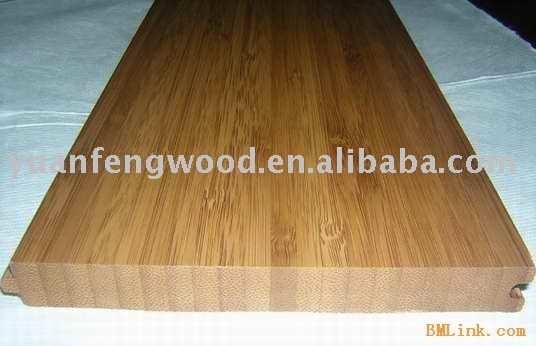clear cedar vs vertically laminated bamboo
Moderators: Head Monkey, kelvin, bigKam, skidesmond, chrismp
clear cedar vs vertically laminated bamboo
Found some clear cedar and looks just like vertically laminated bamboo. What are the pros and cons of the cedar vs the bamboo anyone know?
Depending on what species of cedar it might be on the soft side
Fighting gravity on a daily basis
www.Whiteroomcustomskis.com
www.Whiteroomcustomskis.com
look up the Janka hardness scale for red cedar, this will tell you how hard it is compared to other wood specie
Fighting gravity on a daily basis
www.Whiteroomcustomskis.com
www.Whiteroomcustomskis.com
Hardness doesn't really say much about the flex you can expect from a certain species. Bending stiffness and young's modulus are more meaningful figures to determine the stiffness of wood.
I want to start experimenting with fir since it has a good bending-stiffness/young's-modulus to weight ratio, which should lead to lighter cores. I just need a supplier that sells it in a quality without knots.
I want to start experimenting with fir since it has a good bending-stiffness/young's-modulus to weight ratio, which should lead to lighter cores. I just need a supplier that sells it in a quality without knots.
-
twizzstyle
- Posts: 2207
- Joined: Tue Mar 07, 2006 8:25 pm
- Location: Kenmore, Wa USA
No, often the horizontally laminated bamboo has a core layer that is oriented with the fibers going laterally. I used horizontal grain bamboo flooring for a pair once. Only got a few days on the skis before the middle layer on one ski ripped apart and the skis were garbage. With VG bamboo all fibers are running longitudinally.gozaimaas wrote:For core material?
Wouldnt you want horizontally laminated bamboo?
(vertical grain doesn't mean the grain is going vertically in the reference frame of the ski - that would be considered end-grain. Some guys use end-grain balsa cores.)
redcedar, easternVinman wrote:look up the Janka hardness scale for red cedar, this will tell you how hard it is compared to other wood specie
Janka Hardness: 900 lbf (4,000 N)
Modulus of Rupture: 8,800 lbf/in2 (60.7 MPa)
Elastic Modulus: 880,000 lbf/in2 (6.07 GPa)
Seems ok to me, and comparing it to other wood it is much much lighter.
Thank you very much twiz. You just saved me.twizzstyle wrote:No, often the horizontally laminated bamboo has a core layer that is oriented with the fibers going laterally. I used horizontal grain bamboo flooring for a pair once. Only got a few days on the skis before the middle layer on one ski ripped apart and the skis were garbage. With VG bamboo all fibers are running longitudinally.gozaimaas wrote:For core material?
Wouldnt you want horizontally laminated bamboo?
(vertical grain doesn't mean the grain is going vertically in the reference frame of the ski - that would be considered end-grain. Some guys use end-grain balsa cores.)
Oddly enough, HOT snowboards (now part of Hammer, and no longer producing alpine boards) used to make their Blast series with horizontally lammed cores. I suspect they lammed them themselves, though, so probably using rather different glues / epoxies than those used for flooring.
I've got 2 of them, a 178 and a 160, and haven't had problems with either, despite riding them hard for 10 years plus.
It would hurt to tear one of my "daily drivers" to bits, but it's coming up for the "bourse aux skis" season, if I see one that's dead and cheap I may "invest" in a "jigsaw project", see exactly how they are put together.
I've got 2 of them, a 178 and a 160, and haven't had problems with either, despite riding them hard for 10 years plus.
It would hurt to tear one of my "daily drivers" to bits, but it's coming up for the "bourse aux skis" season, if I see one that's dead and cheap I may "invest" in a "jigsaw project", see exactly how they are put together.
Eastern red cedar has a weight of 33 lbs/ft^3 and an elastic modulus of 6.07 GPa. So the modulus to weight ratio is 607 / 33 = 18.39 (I scaled the modulus up to get number that are easier to compare, actually it is 0,1839).
Douglas fir has a weight of 30-33 lbs/ft^3 (average is 31.5) and an elastic modulus of 13.0 GPa. So the modulus to weight ratio is 1300 / 31.5 = 41.27.
Higher values are obviously better here, but like I said it's really hard to find good quality douglas fir.
These calculations are how I decide whether a wood species could work as a core material.
Douglas fir has a weight of 30-33 lbs/ft^3 (average is 31.5) and an elastic modulus of 13.0 GPa. So the modulus to weight ratio is 1300 / 31.5 = 41.27.
Higher values are obviously better here, but like I said it's really hard to find good quality douglas fir.
These calculations are how I decide whether a wood species could work as a core material.
I'm up in the air of which way to go, because the fir at this lumber yard is really nice stuff, straight gain and no knots but it does cost a little bit more.chrismp wrote:Eastern red cedar has a weight of 33 lbs/ft^3 and an elastic modulus of 6.07 GPa. So the modulus to weight ratio is 607 / 33 = 18.39 (I scaled the modulus up to get number that are easier to compare, actually it is 0,1839).
Douglas fir has a weight of 30-33 lbs/ft^3 (average is 31.5) and an elastic modulus of 13.0 GPa. So the modulus to weight ratio is 1300 / 31.5 = 41.27.
Higher values are obviously better here, but like I said it's really hard to find good quality douglas fir.
These calculations are how I decide whether a wood species could work as a core material.







